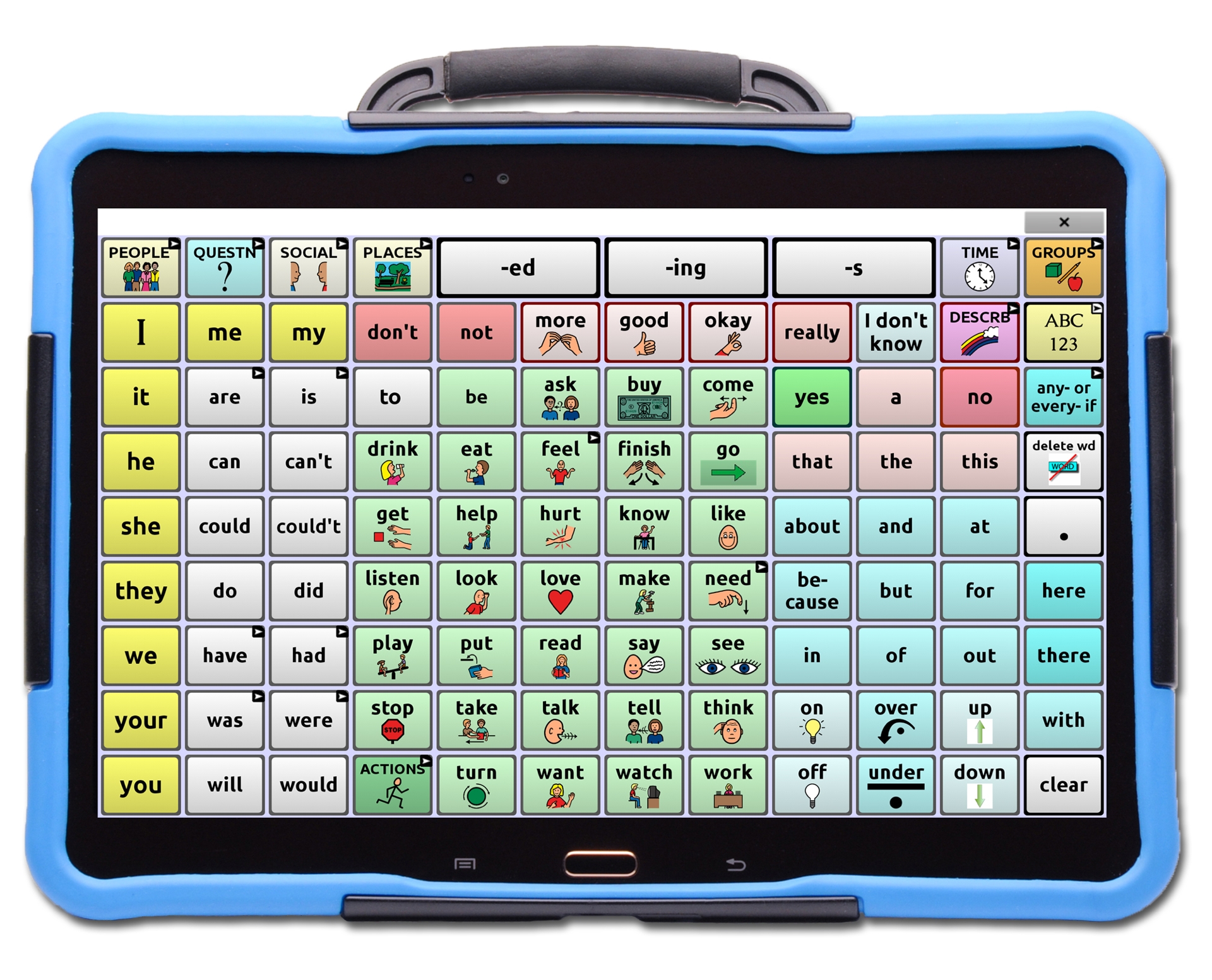
How Do I Write AAC Goals?
February 22, 2016
As the lead SLP in my school district, I often get asked, “How do I write goals for AAC?” My answer always is: “The same way you write them for any other student.”
Doug Cutler, CCC-SLP and AAC Specialist in Mesa Public Schools, says:
Although AAC may seem daunting on the surface, the reality is that goals referencing AAC are no different than any other language goals. AAC therapy is language therapy with an alternate output (synthesized speech versus natural speech).
For any student, with or without AAC, document communication strengths and needs in the present levels section of the IEP. For a student using an AAC device, it is typical to see the student described as being non-verbal or unintelligible. To develop goals, consider:
- typical language development
- the individual needs of the student
- the student’s language development
- the curriculum that the student is needing to access
For AAC users, the goals should then be written to acknowledge that expressive language (output) goals are accomplished through the aid of symbols supports, communication books/boards, and/or a voice output communication device.
Mr. Cutler further states:
The exact device should not be identified in the goal as this is a variable that is subject to frequent change due to a variety of circumstances (e.g. changes in technology, ill charging, technical malfunction) that affect the IEP team’s ability to adhere to the IEP goal. The exact model, configuration, and description of how the device is currently implemented and accessed is able to be addressed in the PLAAFP where the team is providing a description of the student at this certain point in time and not making inferences or predictions regarding future performance.
An example of information to put in the PLAAFP is:
Hailey has access to a personal NOVA Chat 8 communication device configured in a 42 Basic Location language setup. Device is currently accessed via direct selection (Hailey points with the pointer finger of her right hand) of the touchscreen through the aid of a keyguard. She currently uses the device to initiate greetings and is beginning to use the device within curriculum to answer simple questions providing one-word responses to teacher prompts with minimal cues.
The goal would then focus on the target as it relates to curriculum and language, not the communication medium. For example, instead of saying “Hailey will use a NOVA Chat 8 to …” you can say:
Hailey will independently request help to gain attention in an effort to complete an activity or task using symbol supports/voice output device on 4/5 opportunities as measured by SLP data over 3 consecutive sessions per grading period.
The primary thing to remember is that AAC is simply a mode of output. Description and development of language is the same regardless of whether or not the student requires an alternate way to express himself. That is why we must advocate for our students that there should be no “AAC time” or “communication time” scheduled into the classroom day or at home. Rather, communication begins from the moment a student wakes up until the moment he goes to sleep. If an AAC device is sitting on a shelf 90% of the day and is only brought out for certain scheduled activities, there is no way for that student to truly access curriculum/demonstrate learning.
-Lisa



